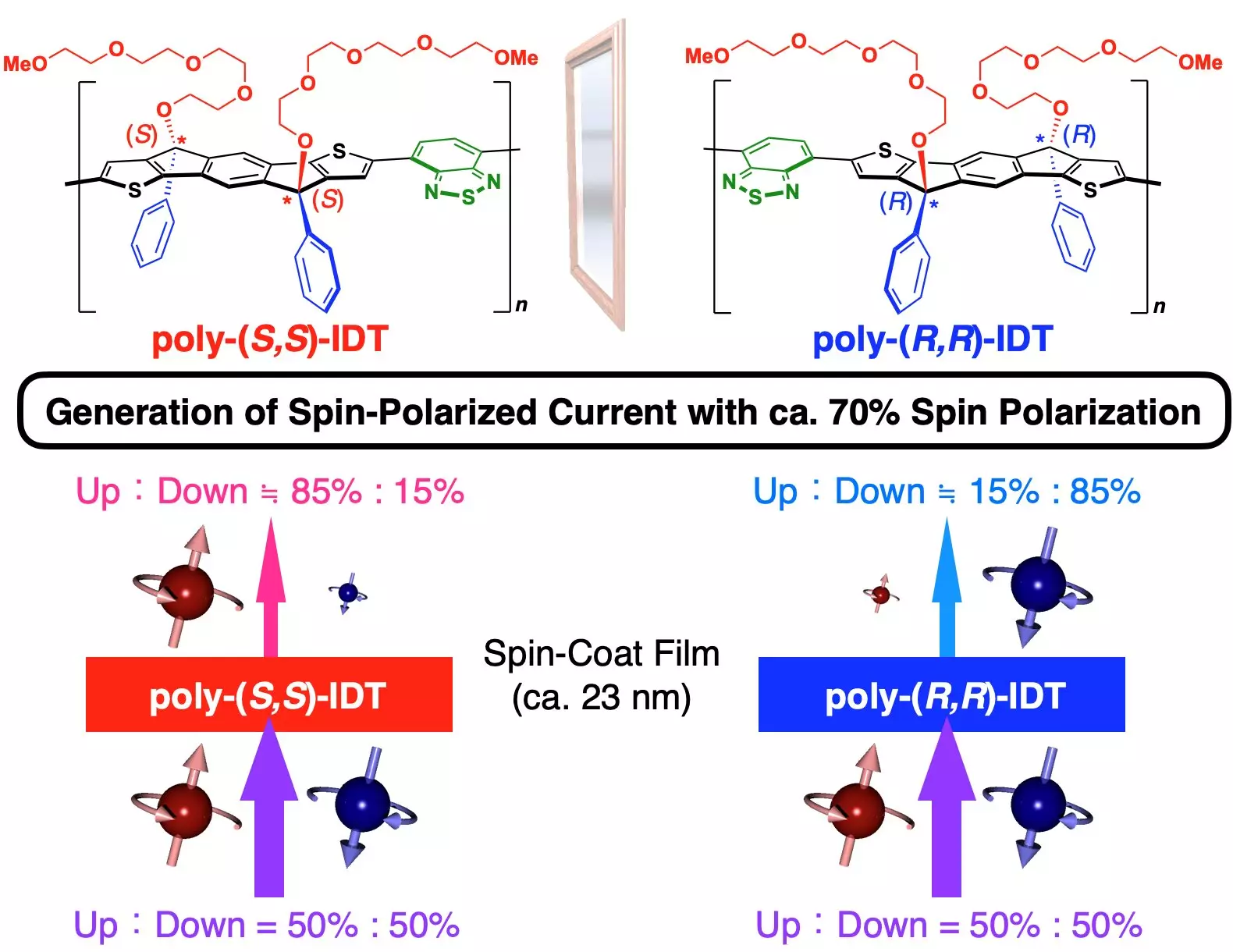Chirality, a property of molecules that exist in two forms that are mirror images of one another, plays a significant role in the behavior of materials when interacting with light and electrical currents. This fundamental concept can be likened to human hands; although both are formed similarly, their left and right configurations lead to vastly different interactions in physical space. In recent research carried out by a team from Osaka University, the effects of molecular chirality have been harnessed to develop advanced copolymer films that display remarkable qualities of spin polarization, presenting a new frontier in the field of spintronics.
The study highlighted in the publication from Chemical Communications unveils the synthesis of chiral copolymer films with significant spin filtering capabilities. By employing a chiral indacenodithiophene (IDT) derivative as a monomer unit, the researchers successfully crafted polymers that exhibited distinct properties based on their chirality. This attribute not only provides an avenue for enhanced functionality in electronic devices but also aligns with the increasing demand for sustainable and efficient energy systems. Spintronics, which leverages the intrinsic spin of electrons alongside charge, stands to gain immensely from these innovations.
To evaluate the chirality-induced spin selectivity (CISS) of the synthesized films, the researchers utilized an atomic force microscope. This technique required the careful positioning of a metal cantilever that operated under up or down polarization, managed by a neodymium magnet. The interaction of the copolymer films with a polarized current revealed differential responses based on the polarization direction—a key indicator of CISS. Remarkably, these films achieved a spin polarization rate close to 70%, positioning them among the highest-performing chiral polymers known to date. Such a strength of spin polarization is crucial for their prospective applications.
One of the standout features of the IDT copolymer films is their ease of preparation through spin coating, contrasting with previous methods that often involved complicated processes. This simplicity not only reduces production costs but also enhances their commercial viability within the dynamic landscape of spintronics. Their potential applications are vast, especially considering the growing interest in clean energy technologies that can utilize spin-polarized currents. The capacity to function as effective spin filters opens pathways for innovative electronic devices that could transform energy management and storage solutions.
The advancements demonstrated by the Osaka University team underscore the importance of chirality in developing new materials for electronic applications. As researchers continue to explore the unique properties of chiral substances, it is likely that we will see further breakthroughs in spintronics capable of revolutionizing existing technologies. With the IDT copolymer films leading the way, the landscape of electronic devices powered by spintronics is on the brink of significant evolution, promising to enhance the efficiency and sustainability of future energy systems.

